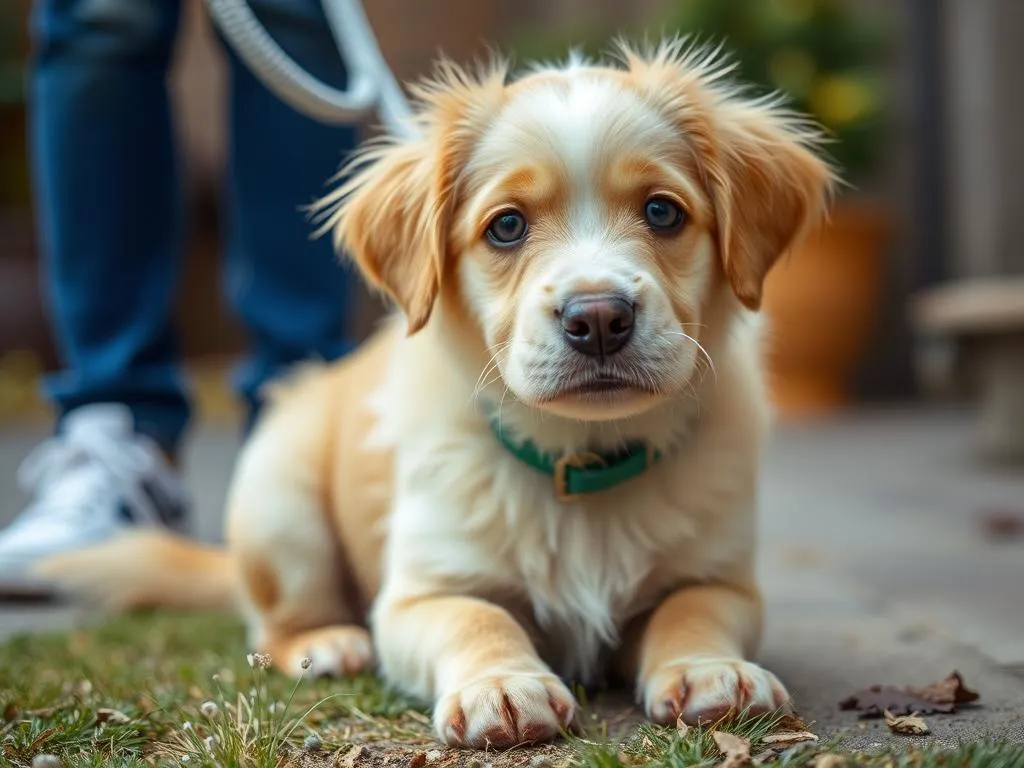
Introduction
Potty training is one of the most crucial aspects of dog ownership. A well-trained dog is not only a joy to have around but also contributes to a harmonious living environment. However, many pet owners encounter dog potty training issues that can lead to frustration and confusion. Understanding these challenges is essential for effective training.
In this article, we will delve into common potty training problems and provide practical solutions. Emphasizing the importance of patience and consistency, we aim to equip you with the knowledge you need to tackle dog potty training issues head-on.
Understanding Dog Potty Training
What is Dog Potty Training?
Dog potty training refers to the process of teaching your dog to eliminate waste in the appropriate place, whether that’s outdoors or on designated surfaces indoors. The primary objectives are to establish a routine and encourage good habits through positive reinforcement. This involves rewarding your dog for using the correct area, thus making the behavior more likely to be repeated.
The Importance of Timing
Timing plays a critical role in successful potty training. Puppies can begin their potty training as early as 12 weeks old, but it’s essential to consider their developmental stages. Ideal times for training sessions include:
- After meals
- After waking up
- After playtime
Being mindful of these moments helps create a consistent routine, which is key to overcoming dog potty training issues.
Factors Influencing Potty Training Success
Several factors can influence the success of potty training:
-
Breed Differences and Temperament: Some breeds are inherently easier to train than others. For example, Labrador Retrievers are often easier to potty train than more stubborn breeds like Bulldogs.
-
Health Considerations: Health issues such as urinary tract infections can lead to frequent accidents. Regular veterinary check-ups are essential to rule out medical problems that could hinder potty training.
Common Dog Potty Training Issues
Inconsistency in Training
One of the most common dog potty training issues is inconsistency in training. Mixed signals from owners can confuse dogs. Signs of inconsistency may include:
- Varying potty locations
- Different commands for the same behavior
- Irregular schedules
A well-structured household routine is vital for effective training.
Accidents in the House
Accidents happen, but understanding their causes is crucial. Common reasons for indoor accidents include:
- Lack of supervision
- Incomplete training
- Health problems
It’s important to differentiate between behavioral and medical issues. If accidents persist despite training efforts, consult your veterinarian.
Fear and Anxiety
Fear and anxiety can significantly impact a dog’s ability to learn potty training. An anxious dog may refuse to go outside or may have accidents indoors due to stress. Solutions for anxious dogs include:
- Creating a calm environment
- Gradual exposure to outdoor spaces
- Using positive reinforcement to build confidence
Marking Behavior
Marking territory is a natural instinct in dogs and can complicate potty training efforts. Understanding why dogs mark territory is essential. Strategies to manage marking behavior include:
- Spaying or neutering
- Providing sufficient outdoor time
- Interrupting marking behavior with a firm “no” and redirecting to the proper area
Regression in Training
Regression in training can be disheartening for pet owners. Factors that may cause regression include:
- Changes in the household (new pets or family members)
- Stressful situations (moving to a new home)
- Illness or injury
Addressing and correcting setbacks involves returning to a consistent routine and reinforcing good habits through positive reinforcement.
Tips for Effectively Addressing Potty Training Issues
Establishing a Routine
A consistent schedule is crucial for successful potty training. Here are some tips for creating a successful potty routine:
- Take your dog out first thing in the morning and last thing at night.
- Schedule potty breaks after meals and playtime.
- Use the same door and path to the potty area to reinforce the routine.
Positive Reinforcement Techniques
Positive reinforcement is a powerful tool in potty training. Rewarding your dog for successful eliminations helps reinforce good behavior. Examples of effective rewards include:
- Treats
- Praise
- Playtime
Utilizing Crate Training
Crate training can be an effective method for potty training. Benefits of crate training include:
- Providing a safe space for your dog
- Instinctively encouraging dogs to avoid soiling their sleeping area
To introduce a crate effectively, ensure it is comfortable and never use it as a form of punishment.
Monitoring Diet and Hydration
Diet plays a significant role in your dog’s potty habits. Monitoring your dog’s diet and hydration can help establish a routine. Recommendations for feeding schedules include:
- Feed your dog at the same times each day
- Avoid giving water right before bed to reduce nighttime accidents
Using Potty Pads and Outdoor Options
Potty pads can be useful for indoor training, especially for apartment dwellers or during inclement weather. Here are some pros and cons of using potty pads:
Pros:
– Convenience for indoor living
– Reduces the need for outdoor trips during bad weather
Cons:
– Can lead to confusion about where to go
– May delay transition to outdoor potty habits
Transitioning from pads to outdoor potty breaks should be gradual, allowing your dog to adjust to the change.
Tools and Resources for Successful Potty Training
Recommended Training Tools
Using the right tools can enhance the potty training experience. Here’s an overview of useful tools:
- Leashes: Essential for guiding your dog outside.
- Crates: Helps establish a safe space for your dog.
- Pee Pads: Useful for indoor training, especially for young puppies.
Using these tools effectively can help streamline the potty training process.
Seeking Professional Help
If you find yourself struggling with dog potty training issues, it may be time to consider professional help. Hiring a trainer can provide personalized guidance. Benefits of consulting a veterinary behaviorist include:
- Expert advice tailored to your dog’s specific needs
- Strategies for overcoming unique challenges
Educational Resources
Numerous books and websites focus on dog training, offering valuable insights and techniques. Online communities and forums can also provide support and advice from experienced dog owners.
Case Studies and Real-Life Examples
Successful Potty Training Stories
Many dog owners have faced challenges but ultimately found success in potty training. Here are a few brief case studies:
-
Case Study 1: A family with a stubborn Dachshund used a strict schedule and positive reinforcement, leading to successful outdoor potty habits in just a few weeks.
-
Case Study 2: A single pet owner struggled with a fearful rescue dog who eventually overcame anxiety through gradual outdoor exposure and consistent rewards.
Lessons Learned from Challenges
Many dog owners make common mistakes during potty training. Key takeaways from challenging experiences include:
- Consistency is key; mixed signals lead to confusion.
- Understanding your dog’s behavior helps identify underlying issues.
- Patience is crucial; every dog learns at their own pace.
Conclusion
In conclusion, navigating dog potty training issues can be a challenging yet rewarding journey. By understanding the factors that influence potty training and applying practical solutions, you can foster good habits in your furry friend. Remember, patience and persistence are your best allies in this process.
With the right tools, resources, and mindset, you can overcome any potty training challenge that comes your way. Your dedication will lead to a well-trained dog and a happy home.









